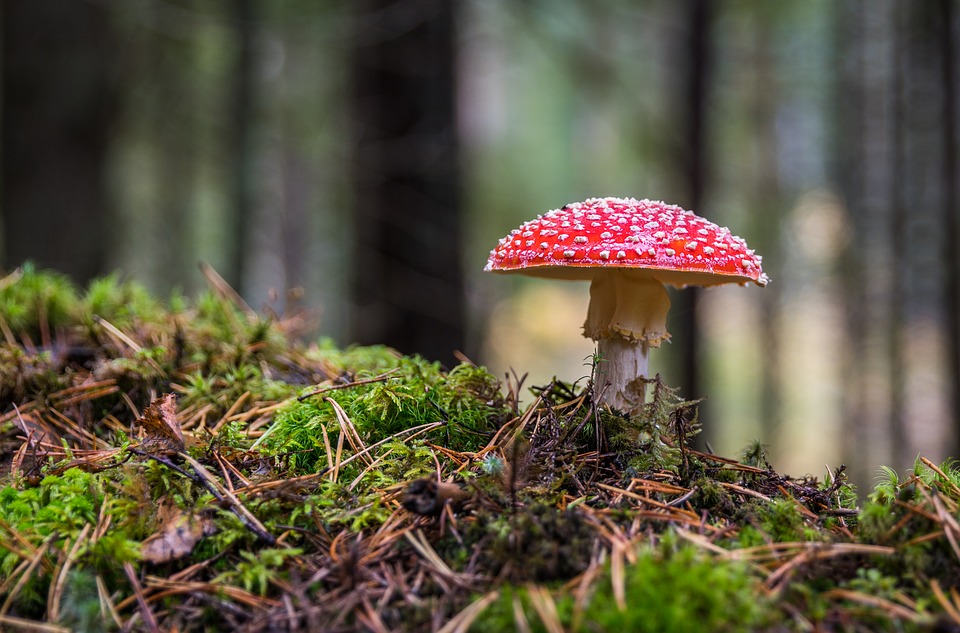Jenni MacLean
Jenni MacLean
AP Environmental Science ♻️
252 resourcesSee Units
Multiple Choice Practice for Ecosystems Concepts
Welcome to Unit 1 AP Environmental Science Multiple Choice Questions! Grab some paper and a pencil 📄 to record your answers as you go. You can see how you did on the Unit 1 Practice Questions Answers and Review sheet once you're done. Don't worry, we have tons of resources available if you get stumped 😕 on a question. And if solo study is not your thing, join a group in Hours!
Not ready to take a quiz yet? Start studying unit 1 Here: Intro to Unit 1

Image From Pixabay.
Funguses are decomposers that recycle essential nutrients back into a usable form for producers.
Facts about the test: The AP Environmental Science exam has 80 multiple choice questions and you will be given 1 hour 30 minutes to complete the section. That means it should take you around 17 minutes to complete 15 questions.
*The following questions were not written by CollegeBoard and although they cover information outlined in the AP Environmental Science Course and Exam Description the formatting on the exam may be different.
1. What is the best description of an ecosystem?
A. Biotic and Abiotic factors interacting.
B. All interspecies interactions.
C. The populations of all organisms in a given area interacting.
D. The interactions of plants and animals in a given area.
2. A scientist wants to create a diagram showing all of the complex interactions between species living in a local forest preserve, which type would be the most appropriate?
A. Energy pyramid
B. Food pyramid
C. Food web
D. Food chain
3. The sun provides the energy for almost all life on Earth. Approximately how much of the sun's total potential energy hitting the Earth is used in photosynthesis?
A. 90%
B. 75%
C. 10%
D. 1%
4. As energy moves within an ecosystem, how is the majority of it lost?
A. Cellular respiration
B. Light
C. Metabolism
D. Heat loss
5. Net Primary Productivity (NPP) is:
A. The total amount of energy stored.
B. The potential energy that producers can make.
C. The total amount of energy from the sun.
D. The total amount of energy available.
6. A marine biologist is studying a kelp ecosystem. She notices that Sea Urchins eat the kelp and that Sea otters eat the urchins and protect the kelp forest. In this scenario, the Sea Urchin can be classified as a
A. Primary Consumer
B. Secondary Consumer
C. Decomposer
D. Autotroph
7. The most abundant element in Earth's atmosphere is
A. Water
B. Nitrogen
C. Carbon
D. Oxygen
8. A group of living organisms play a large role in the nitrogen cycle. Which group do they belong to?
A. Producers
B. Detritivores
C. Virus
D. Bacteria
9. Humans have altered the phosphorus cycle by
A. Clear-cutting forests.
B. Creating large-scale open-pit mines.
C. Damming rivers for hydroelectric power.
D. Using fertilizers.
10. The climate of an area is defined by
A. Long term temperature and precipitation averages.
B. The proximity to the equator.
C. The recorded high and low-temperature records over the last 100 years.
D. The current atmospheric events such as storms or droughts.
11. Which region of the Earth gets hit with the most direct angle of sunlight?
A. North pole
B. Temperate regions
C. Equator
D. South Pole
12. Earth's biome with the greatest biodiversity is
A. Coral Reefs
B. Savannahs
C. Rainforests
D. Grasslands
13. A scientist is tracking reindeer migrations and notices that they spend a significant amount of time on the permafrost. What type of biome are they in?
A. Chaparral
B. Tundra
C. Grasslands
D. Forest
14. A marine biologist classifies a new species as having a benthic existence, this would mean that organisms,
A. Is stuck to a surface and can not move around.
B. Lives on the bottom of the ocean.
C. Exists in the area between high and low tide.
15. An ecologist is writing up documentation to convince developers to leave a wetland as it is. What fact is inaccurate about the benefits of wetlands?
A. Wetlands filter pollutants out of the water.
B. Wetlands are a breeding site for fish and birds.
C. Wetlands are ideal for grazing cattle and other livestock.
D. Wetlands are areas of high primary productivity.
Browse Study Guides By Unit
🏜Unit 1 – The Living World: Ecosystems
🐠Unit 2 – The Living World: Biodiversity
👪Unit 3 – Populations
🌏Unit 4 – Earth Systems & Resources
🏖Unit 5 – Land & Water Use
⚡️Unit 6 – Energy Resources & Consumption
💨Unit 7 – Atmospheric Pollution
♻️Unit 8 – Aquatic & Terrestrial Pollution
🔥Unit 9 – Global Change
🧐Multiple Choice Questions (MCQs)
✍️Free Response Questions (FRQs)
📆Big Reviews: Finals & Exam Prep

© 2023 Fiveable Inc. All rights reserved.